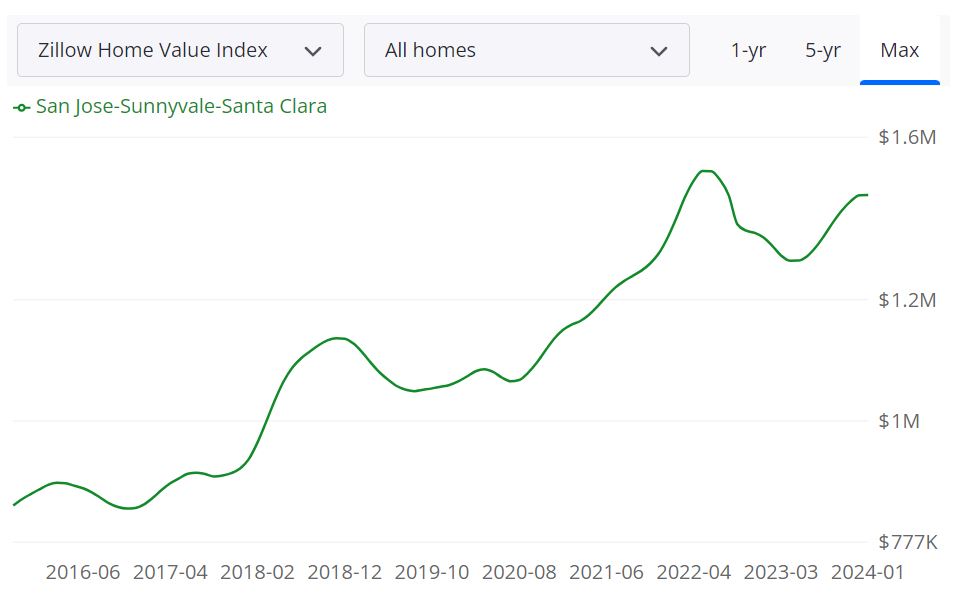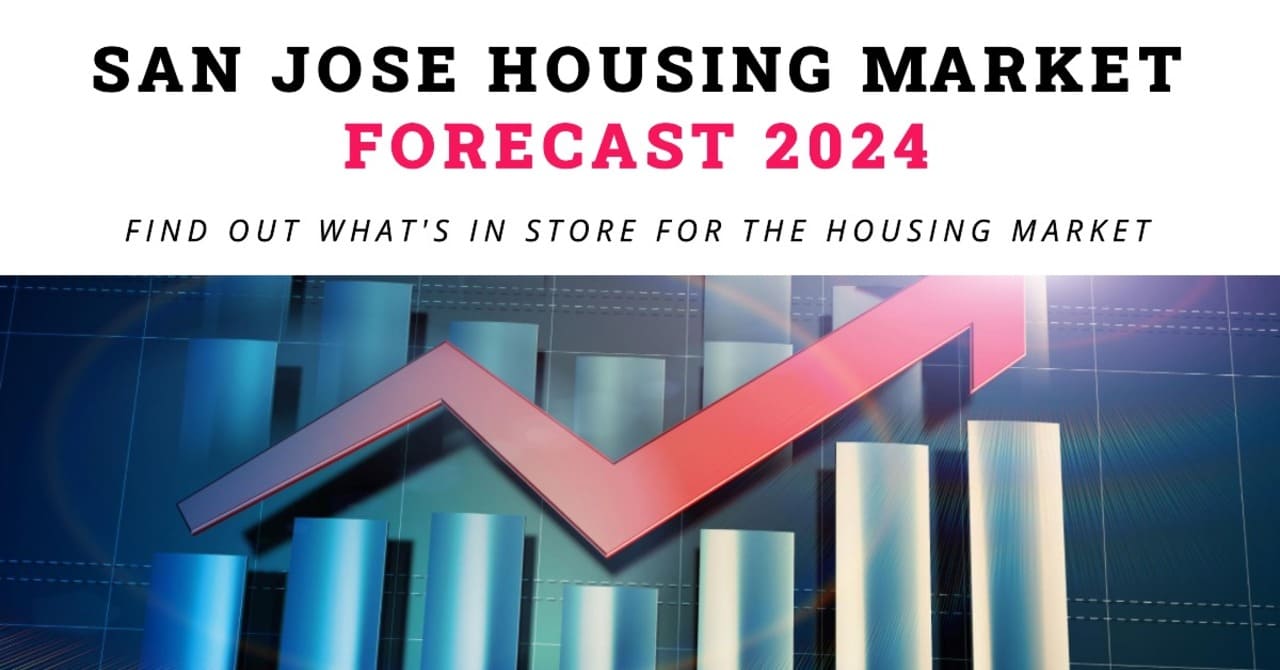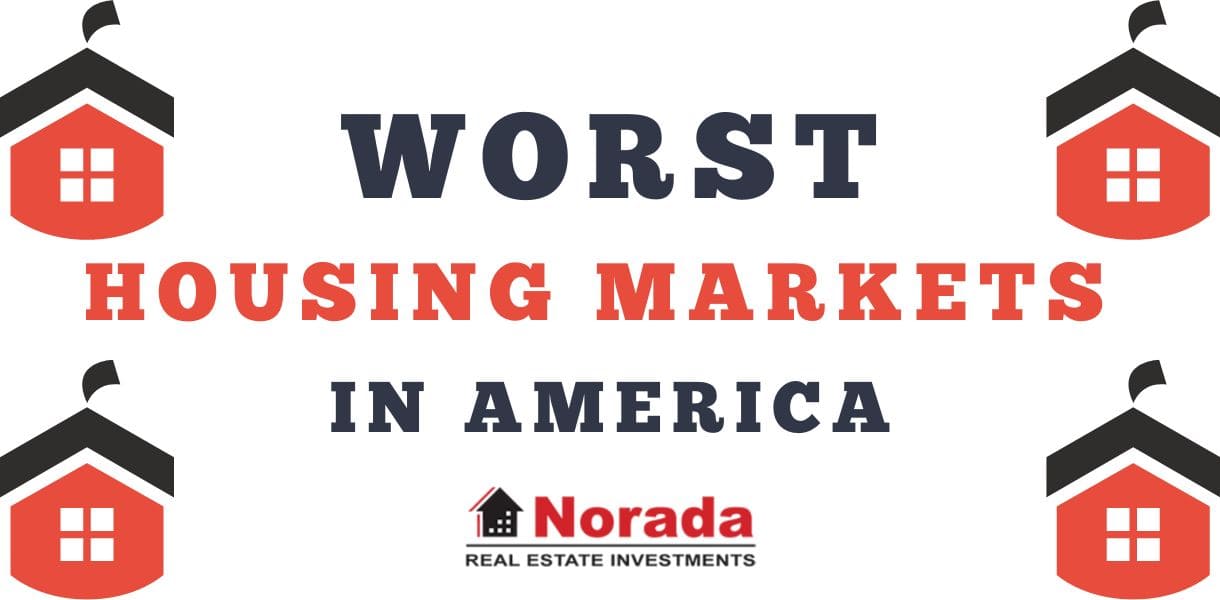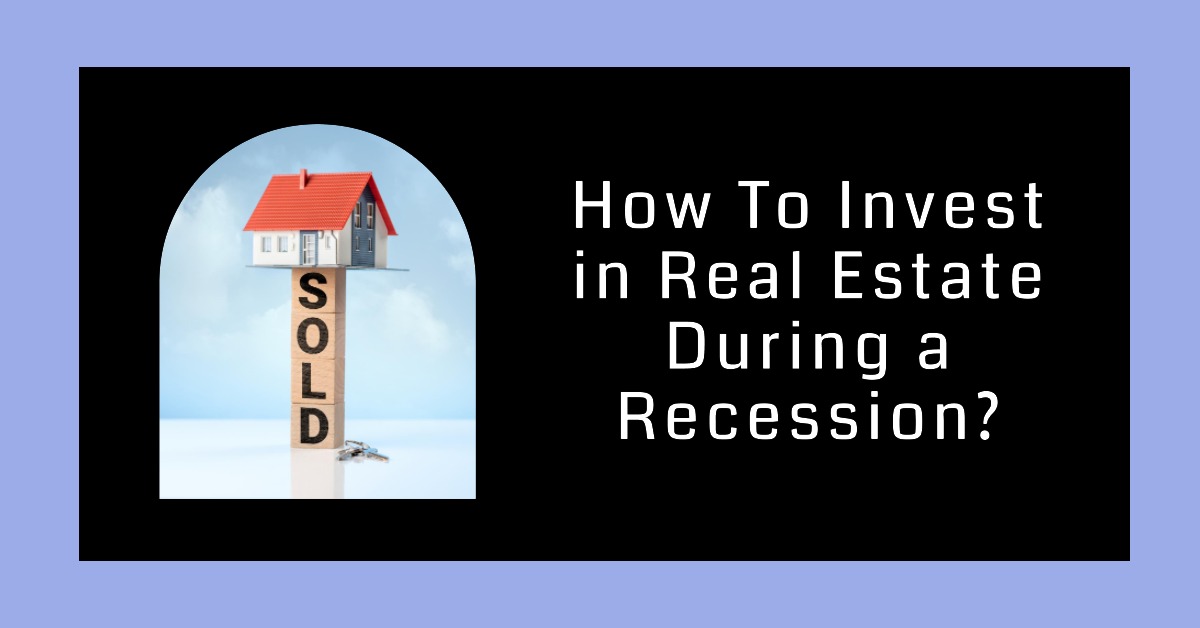The San Jose housing market is not just a real estate arena; it's a competitive battleground where homes are sought after and sold at a remarkable pace. In the heart of Silicon Valley, the San Jose housing market stands as a testament to the dynamic real estate landscape in one of the most sought-after regions in the United States.
The current state of the San Jose housing market leans towards being a seller's market. With homes selling swiftly, often above the list price, and a limited inventory, sellers have the upper hand. Buyers, on the other hand, face challenges such as increased competition, higher prices, and a reduced likelihood of price drops.
San Jose Housing Market Trends in 2024
How is the Housing Market Doing Currently?
The San Jose housing market is experiencing a robust growth, with home prices seeing a significant surge of 12.1% compared to the previous year. According to Redfin, in January 2024, the median home price reached an impressive $1.3 million. This surge indicates a strong demand for homes in the region.
On average, homes in San Jose are swiftly changing hands, selling after a mere 25 days on the market, a notable decrease from the 35 days observed last year. This suggests a faster-paced real estate environment in the city.
The median sale price in San Jose is noteworthy, standing at 214% higher than the national average. The market is undeniably competitive, with homes often receiving multiple offers, some even with waived contingencies. The average homes sell for about 3% above the list price and go pending in an impressive 18 days, while hot homes can sell for approximately 8% above list price and go pending in just 8 days.
How Competitive is the San Jose Housing Market?
The San Jose real estate landscape is characterized by intense competition. The rapid pace at which homes are sold, with an average of 18 days on the market, underscores the high demand for housing in the area. With many homes receiving multiple offers, the market clearly favors sellers, leading to sales prices often exceeding the list price.
The statistics reveal that 56% of homes are sold above the list price, marking an 18.7% increase year-over-year. This trend emphasizes the competitiveness of the market, with buyers willing to pay a premium to secure a property in the sought-after San Jose region.
Are There Enough Homes for Sale in San Jose to Meet Buyer Demand?
While the demand for homes in San Jose is evident, the supply does not seem to keep pace. The number of homes sold in January reached 284, a noticeable increase from the previous year's 220. However, the gap between supply and demand raises questions about the availability of homes to meet the growing buyer demand in the market.
Furthermore, the data on homes with price drops indicates that 17.1% of homes experienced a price drop, representing a -2.9% decrease year-over-year. This suggests a market where sellers are less likely to reduce prices, adding to the challenges faced by buyers.
What is the Future Market Outlook for San Jose?
Examining the migration and relocation trends in San Jose provides insights into the potential future market dynamics. In the period from Nov '23 to Jan '24, 24% of homebuyers in San Jose searched to move out of the city, while 76% intended to stay within the metropolitan area.
Additionally, the data on homebuyers moving into San Jose from outside metros reveals interesting patterns. Across the nation, 3% of homebuyers searched to move into San Jose. Manhattan homebuyers led the trend, followed by South Bend and Ithaca. These migration patterns can influence the future supply and demand dynamics of the San Jose housing market.
Why Are Houses in San Jose So Expensive?
San Jose, like the rest of the Bay Area, is an excellent place to call home. However, you should only do so if you can afford it. San Jose's job market and economy are thriving. The region has the fastest rate of employment growth among the nation's largest metropolitan areas. San Jose is also located in Silicon Valley, which is home to technology behemoths such as Apple and Google, as well as a slew of successful startup businesses. Numerous well-compensated employees can afford very high market prices.
Houses in San Jose are known for their high prices due to several factors. Firstly, San Jose is located in the heart of Silicon Valley, which is home to numerous technology giants and startups. The thriving tech industry has led to high demand for housing from highly paid professionals, driving up prices.
Additionally, limited land availability and strict zoning regulations restrict new construction, further exacerbating the supply-demand imbalance. The desirable climate, quality of life, and proximity to job opportunities also contribute to the high demand for housing in San Jose, making it a sought-after market with premium prices.
In addition to the factors mentioned earlier, several other reasons contribute to the high cost of houses in San Jose. The region's strong economy and job growth have attracted a skilled workforce from around the world, increasing the competition for housing. The presence of prestigious universities and research institutions in the area further fuels the demand for housing from students and faculty members.
Moreover, San Jose faces challenges in expanding its infrastructure to accommodate the growing population. Limited housing supply coupled with a rapidly increasing population puts pressure on the existing housing stock, leading to higher prices. The high cost of construction materials, labor, and stringent building regulations also contribute to the overall cost of housing in the area.
Additionally, the desirability of the San Jose area, with its excellent schools, cultural amenities, and proximity to natural attractions like beaches and mountains, adds to the demand for housing. The high cost of living in the region is also reflected in the housing prices.
Overall, the combination of a booming tech industry, limited supply, population growth, infrastructure constraints, and desirability of the area contribute to the expensive housing market in San Jose.
Santa Clara County Housing Market Report
The Santa Clara County housing market experienced notable shifts in January 2024, reflecting changes in median sold prices and sales volumes for existing single-family homes.
Median Sold Price Trends
According to the California Association of Realtors (C.A.R.), in January 2024, the median sold price for existing single-family homes in Santa Clara County stood at $1,710,440. This represents a slight decrease from the previous month, where the median price was $1,725,000. However, when compared to January 2023, there is a substantial increase of 11.8%. This surge indicates a robust year-over-year growth in the median sold prices of homes in the region.
Sales Activity Overview
The sales activity in Santa Clara County, as observed in January 2024, witnessed a significant decline in month-to-month performance. The sales figures for January 2024 were down by 22.8% compared to December 2023. In contrast, the year-over-year sales data paints a more optimistic picture, showcasing a substantial increase of 19.7% when compared to January 2023. This discrepancy between month-to-month and year-over-year figures indicates the dynamic nature of the housing market in the region.
Market Fluctuations and Impact on Prices
The month-to-month decrease of 0.8% in median sold prices could be attributed to various factors influencing the market dynamics. Economic conditions, interest rates, and local demand can contribute to fluctuations in housing prices. It's crucial for potential buyers and sellers to consider these factors when navigating the Santa Clara County real estate landscape.
Year-Over-Year Growth and Market Resilience
Despite the month-to-month variations, the impressive 11.8% year-over-year growth in median sold prices indicates the overall resilience and attractiveness of the Santa Clara County housing market. This growth not only demonstrates the sustained demand for homes in the region but also highlights the potential for long-term investments in Santa Clara County real estate.
Sales Dynamics and Future Outlook
The drastic 22.8% decline in month-to-month sales figures may raise questions about the immediate market conditions. However, the positive year-over-year sales growth of 19.7% provides a more balanced perspective. It suggests that while short-term fluctuations occur, the underlying strength of the Santa Clara County housing market remains intact.
Factors Driving Market Trends:
- Economic Growth: Santa Clara County's thriving economy, fueled by the technology sector, continues to attract homebuyers, contributing to the increase in median prices.
- Low Inventory: Limited housing inventory is a significant driver of rising home prices, creating a competitive environment for potential buyers.
- Interest Rates: The prevailing interest rates play a crucial role in influencing buyer behavior. Even with a slight month-to-month decrease, the year-over-year increase suggests a stable and growing market.
San Jose Housing Market Forecast for 2024 and 2025
Key Housing Metrics:
1. Average Home Value:
According to Zillow, the average home value in the San Jose-Sunnyvale-Santa Clara region stands at $1,493,255. This reflects a notable 6.2% increase over the past year, showcasing the region's robust real estate growth. Homes in this area typically go pending in around 14 days.
2. 1-Year Market Forecast:
Zillow's 1-year market forecast for San Jose, as of January 31, 2024, indicates a -0.5% change. This forecast provides valuable insights for potential buyers and sellers in navigating the market dynamics.
Detailed Housing Metrics:
1. For Sale Inventory:
The San Jose housing market boasts a For Sale Inventory of 1,338 homes as of January 31, 2024. This inventory reflects the current availability of homes for prospective buyers in the region.
2. New Listings:
In January 2024, there were 548 new listings, indicating ongoing activity in the market and potentially expanding options for buyers.
3. Median Sale to List Ratio:
As of December 31, 2023, the median sale to list ratio was 1.014, showcasing a balanced relationship between listed and sold prices.
4. Median Sale Price:
The median sale price for homes in the San Jose area, as of December 31, 2023, was $1,425,167, providing a benchmark for understanding the pricing landscape.
5. Median List Price:
As of January 31, 2024, the median list price for homes stands at $1,282,296, offering insights into the expectations of sellers in the current market.
6. Percentage of Sales:
Examining the market dynamics, 60.5% of sales were over list price, while 33.0% were under list price as of December 31, 2023. These percentages shed light on the competitiveness of the market.
Are Home Prices Dropping in San Jose?
Despite fluctuations in market conditions, there is no evidence to suggest a widespread drop in home prices in the San Jose area. The steady increase in average home value over the past year indicates continued demand and stability in the market.
Will the San Jose Housing Market Crash?
While it's impossible to predict market crashes with certainty, the San Jose housing market currently shows no indications of an imminent crash. Market conditions, including strong demand, limited inventory, and consistent price appreciation, contribute to its resilience against significant downturns.
Is Now a Good Time to Buy a House in San Jose
For prospective buyers considering purchasing a home in San Jose, several factors come into play. While the market may favor sellers, opportunities still exist for buyers, especially those prepared to act swiftly and competitively. With mortgage rates remaining relatively low and the potential for future price appreciation, now could be considered a favorable time to buy a house for those who are financially ready.
Ultimately, whether it's a good time to buy a house depends on individual circumstances, long-term goals, and financial readiness. Consulting with real estate professionals and considering personal priorities can help prospective buyers make informed decisions in navigating the San Jose housing market.

San José Housing Market Update: Q3 2023
The Government of San José has released the Q3 2023 housing market update, providing essential insights into the city's housing situation. The report focuses on various aspects of the housing market, including affordability, rental and sale prices, vacancy rates, and permits issued. Here are the key highlights from the report:
Rental Market Insights
Rent Affordability Challenges: The San José housing market in the third quarter of 2023 paints a challenging picture for renters. To afford the average effective monthly rent for a 2-bedroom apartment, individuals must earn a staggering $58 per hour, equating to an annual income of $120,360. This high threshold highlights the increasing financial strain on renters in the region.
Residential Building Permits: In Q3 2023, a total of 1,202 residential building permits were issued, with a notable 33% earmarked for affordable apartments. The emphasis on affordable housing indicates a concerted effort to address the housing crisis in San José.
Accessory Dwelling Units (ADUs): The issuance of 126 ADU permits during the same period underscores the city's commitment to exploring innovative housing solutions. ADUs serve as an alternative for homeowners and contribute to the overall housing supply.
Rental Trends: Despite a 1.3% decline in average effective rent quarter-over-quarter (QoQ), the overall rental vacancy rate increased from 5.1% to 5.2% QoQ. This suggests a dynamic rental market with shifting demand and supply forces.
Homeownership Challenges
Income Requirements for Homebuyers: Homeownership in San José remains an elusive dream for many, as prospective homebuyers need to earn $197 per hour, translating to an annual income of $409,742, to afford a median-priced single-family home. The figures indicate the formidable financial barriers to entering the housing market.
Median Single-Family Home Price: The median price for a single-family home in San José stood at $1,598,888, maintaining a flat trajectory QoQ. However, the year-over-year (YoY) analysis reveals a significant uptick of 10.6%, underlining the persistent demand and limited housing supply.
Condo/Townhome Market: While median condo/townhome prices experienced a slight dip of 2.1% QoQ, they exhibited a modest 2.7% increase YoY. This nuanced trend suggests varied dynamics within different segments of the housing market.
Affordability Disparities
National vs. San José Affordability: The yawning gap in affordability becomes apparent when comparing the national average to San José. Only about 1 in 15 families can afford to purchase a median-priced home in San José, emphasizing the acute affordability crisis in the metro area.
Impact on Essential Workers: The data underscores the harsh reality that many essential workers face in San José. From healthcare professionals to service industry workers, the annual income required to own a median-priced single-family home or even rent a two-bedroom apartment is beyond reach for a significant portion of the workforce.
San Jose Real Estate Investment Overview
Investing in San Jose real estate can be an attractive prospect due to several factors that make it a vibrant market within the larger real estate landscape of California. San Jose, often referred to as the capital of Silicon Valley, is a bustling tech hub renowned for innovation and economic prosperity. This status has positioned it as an appealing destination for both local and international investors seeking opportunities in real estate.
One of the top reasons to consider investing in San Jose real estate is its position as a thriving tech hub. The city hosts numerous technology companies and startups, attracting a high concentration of skilled professionals. This influx of talent has created a consistent demand for housing, both for buying and renting, making it an investor-friendly market. The demand is further driven by the desire of tech professionals to reside in close proximity to their workplaces, enhancing the value of residential properties.
The city's strong and diverse economy is another compelling reason to invest in San Jose real estate. San Jose is not solely reliant on the tech sector; it boasts a diverse economic base that includes industries like healthcare, finance, manufacturing, and education. A robust econom
San Jose's real estate market benefits immensely from being a prominent tech hub, housing major technology companies and startups. The presence of big tech firms not only drives demand for office spaces and commercial real estate but also fuels the need for housing, attracting a pool of high-income tech professionals to the region. This demand contributes to property appreciation, high rental yields, and a consistent influx of talent, making it an attractive proposition for real estate investors seeking to capitalize on the tech industry's growth and stability.
The limited supply of housing and high demand for homes is a significant factor driving property values in San Jose. The region faces constraints on available land for construction, limiting the number of new housing developments. Simultaneously, the city's desirability and employment opportunities attract a growing population. This supply-demand imbalance exerts upward pressure on both property prices and rental rates, making real estate investment potentially lucrative.
The presence of reputable educational institutions also contributes to the investment appeal of San Jose. The city hosts renowned universities and colleges, attracting students and faculty members. This academic influence creates a consistent demand for rental properties, particularly in neighborhoods close to these institutions. Investors can capitalize on this demand by targeting properties suitable for the student population.
Furthermore, ongoing development projects and infrastructural improvements in the city add to its investment allure. The continuous development of commercial spaces, transportation networks, and community amenities enhances the overall quality of life and attractiveness of San Jose. It can result in increased property values over time, providing potential returns on investment.
Drawbacks of Investing in San Jose Real Estate
While the San Jose real estate market offers promising opportunities, it's crucial to consider the potential drawbacks before making investment decisions.
Firstly, the high costs associated with real estate in San Jose can pose a challenge for investors. The median home prices in this region are considerably higher than the national average, demanding substantial initial capital for property acquisition. Investors need to carefully assess their financial capacity and consider the impact on their investment portfolio.
Secondly, the real estate market in San Jose, like any other, is subject to market volatility and economic fluctuations. Changes in interest rates, economic downturns, or shifts in demand can influence property values and rental incomes. Investors need to be prepared for market variations and develop strategies to mitigate risks and adapt to changing market conditions.
Regulatory challenges and legal complexities related to real estate in California can be a potential drawback for investors. The state has specific laws and regulations governing real estate transactions, property taxes, and landlord-tenant relationships. Investors should thoroughly understand these regulations and seek professional guidance to navigate the legal aspects and compliance requirements effectively.
Lastly, the competitive landscape of the San Jose real estate market can present a hurdle for investors. The high demand for properties often leads to competitive bidding, making it crucial for investors to act swiftly and strategically. Additionally, this competitiveness can impact property prices, potentially affecting the overall return on investment.
References
- https://www.car.org
- https://www.car.org/marketdata/data/countysalesactivity
- https://www.zillow.com/san-jose-ca/home-values
- https://www.redfin.com/city/17420/CA/San-Jose/housing-market




